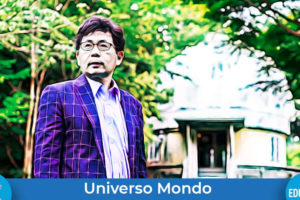Aggiornato il 28 Novembre 2024

After a short break, we’re back with Universe World, the EduINAF column that takes us around the world discovering projects in public outreach, education, science and society. And we start back from our own country, Italy. Inspired by the figure of Margherita Hack, the famous Italian astrophysicist that we’re celebrating this month, one hundred years since her birth, we explore the theme of women in science with Ilenia Picardi, physicist and sociology researcher at the Federico II University of Naples, where she investigates science and technology studies and the gender dimension in research and academia.
As usual in this column, let’s start from your path. From physics to sociology: what brought you here?
I arrived here after a PhD in physics, through a non-linear path, as almost all real career paths are: they are idealized as linear paths, at best from the bottom up, but each path hides many deviations, returns, stories. The real paths of people are much more interesting than those outlined by theory!
During my PhD, in the field of astro-particle physics, I investigated neutrinos in stellar processes: we tried to understand how the production of neutrinos can influence the evolution of stars. Already in my undergraduate and graduate studies, I was very interested in a series of social issues and engaged in a number of social activities, so after my PhD I decided that this drive was very strong for me. I love science deeply – physics in particular and science in general – but I love the cultural and social dimension of science very much, so I chose to give space to these aspects rather than engaging in other specialized areas of research.
After my PhD, I attended a Master in science communication at SISSA in Trieste, and then got offered the opportunity to work at SISSA. I moved from Naples to Trieste, where I lived for several years, working in the field of science communication. Then again, following paths that are anything but linear, I returned to Naples, first collaborating with Città della Scienza and then returning to the University to work on European art and science projects.
What was it like to reinvent yourself in a whole new field of research?
Back at university, I had a very clear thought: I wanted to investigate the gender issue in science, a topic I called “women and science” at the time. I had dealt with it before, but not enough in detail. There was a call for FP7 European projects and, out of nowhere, I decided to work on one of these calls. I was very lucky because I met some partners I didn’t know and a very good coordinator: a consortium was formed, we wrote the project and we won it. The Federico II University was the only Italian partner of this consortium, made up of seven universities from different European countries, and the goal was to work on the Gender Equality Action Plan: an action plan on gender equality.
This was the opportunity for me to investigate these issues: in order to identify the most suitable actions to support the careers of women in research and academia, I tried to understand what were the mechanisms that determined the processes of exclusion. At the same time I started to deal with social studies on science and technology, which were one of the main springs that prompted me to leave physics. In this period I also took a second PhD, on gender issues in academia, and so my second path within the university began, on another track, the one of sociology, but always closely linked to the scientific dimension.

What is your current research about and what does the gender issue represent in your work?
I study processes of knowledge production, which are also social processes. For me, the gender issue provides a perspective, so that on any issue there is always a reflection related to gender, which can be more or less relevant depending on the specific object of study. For example, in recent years I have been working on a project on so-called “rejected scientific knowledge” – knowledge that is proposed as scientific but which is not recognized as such by institutions. In short, scientific fake news. We have studied the mechanisms that lead people first to legitimize alternative knowledge to science and then to support it, to believe in this type of knowledge. This issue is not specifically linked to gender, but within some case studies we see that the gender issue emerges as a relevant case.
You mentioned earlier the mechanisms that determine the processes of exclusion of women in research and academia. Could you describe us this exclusion in Italy?
As part of ongoing research, together with a colleague we analyzed the most recent data available on the website of the Ministry of University and Research, those relating to 2020, looking at the presence of women in different career stages: from the initial post-doctoral research, then proceeding to a fixed-term researcher of types A and B, then staff researcher with a permanent contract, second-tier professor and finally first-tier professor, or full professor. Putting together the data of the entire Italian university, we see that there is an “almost parity” at the beginning of the career: in the position of research fellow we have 50% men and 50% women.
What we then see is the opening of a gap corresponding to the academic recruitment phase, so the problems do not start later in the career but at the very beginning, in the transition from precariousness to stabilization. This is the most significant step in one’s career, the one that decides who stays inside and who doesn’t. Here we already have a significant decrease in the number of women entering academia, a glass door that somehow selects the number of women entering the academy. The high number of female researchers with permanent contracts is not a good thing, because it is a position that will no longer exist at some point: it means that those who have been there for some time stay there longer, while the men have been more easily able to take the next step, towards the position of second-tier professor. And then we have a wide gap that is recorded in top positions, where we have 25% of women against 74.6% of men.

These are the data that describe Italian academia as a whole. What about physics?
If we focus on physics, we see a very different gap. First of all, we have a low presence of women at the beginning: 31% of women against 68% of men in the post-doc phase. So there is a wide gap, a gap already at the beginning. But despite this low initial presence, we have a very large reduction in the number of women right at the glass door: the percentage of women who manage to have access to academia as physics researchers with a permanent position is 19%. There is immediately a very significant, very rapid drop: we started from 31% and we reach 19%. And then we have the usual downward descent when we move towards the top positions: women who are full professors in physics are 14.6%. Obviously this study does not cover the entire picture, since there are male and female physicists in research institutes beyond universities. But physics is characterized as one of the disciplinary areas where the gender-related problem of the scarce presence of women is most significant.
How does the gap measured in physics relate to that of academia as a whole? Is this trend amplified by the low presence of women at the beginning, or does it have a different shape entirely?
The shape of the scissor is quite different: there are already far fewer women who decide to pursue a career in physics, but in correspondence with the position of fixed-term researcher of type B, something shocking happens. Why must the number of women be reduced so much at the permanent hiring phase? This is serious.
When we look at the gap in the final career stage, we are looking at the result of some careers that have developed faster and others over the past 20 years: we see who has just become full professor and who is about to retire, but basically we look at the legacy of a past in which women had less access to education. But when we look at what is happening in correspondence with the position of fixed-term type B researcher, we are looking at what is happening now in academia, at those who hare being hired today. So we see the university of tomorrow, and especially if we have a percentage of women in physics that is reduced from 31% to 19% when we move to a permanent job, it means that there are processes that determine this segregation of women which are active right now, which are right now keeping women out. So there is a need to step in because something is wrong. And here we could open a very large chapter on why.
Instead, let’s talk about actions that can counter this trend…
The actions that can be implemented are many and it is absolutely necessary to make an analysis strictly linked to the institutional context of reference. Personally, I don’t believe there are absolute good practices. An action is a good practice only when it is put into practice and works well. But in fact, an action that works well in one context may be absolutely unsuitable for other contexts. The first myth to debunk, in my opinion, is that of absolute good practices.
Having said that, there are a number of actions that can be taken. It is clear that parenting support services, actions that increase the parental burden distribution between men and women, especially in the early stages of children growth, are actions that can work. But the problems of women in science are not only linked to issues related to the management of motherhood. We see that many women who do not have children also have difficulties, and among other things, not all women face the same difficulties, there are also women who claim they have not encountered problems.
What is clear, however, is that there must be a strong cultural change within institutions, which must initiate transformative processes, first of all to recognize the existence of a gender issue, which is often denied, and then to try and understand which are the everyday practices that create differentiation of paths, within scientific institutions, that are related to gender.

Can you give us an example of these practices?
Sometimes there are practices also linked to regulations: for example, in the case of maternity, this is considered in the evaluation processes. How much? Normally in the evaluations for job applications in Italy, five months of compulsory absence are considered. In Europe, especially if you are applying for a call from the European Research Council (ERC), maternity is counted as 18 months: this is a reasonable time. If you wish to consider the weight of motherhood on scientific productivity, five months, of which two of pregnancy and three of breastfeeding, are negligible: at three months, where does the baby go? With a robot? To the nursery, assuming these are available? Is it possible that, once we have a baby, after three months we forget about it, put it in a kindergarten and pick it up at night? And anyway we stay up at night, and therefore we don’t sleep enough to have the same productivity levels. These five months are truly an offense to women, men, boys and girls: it really means not considering the care work that is absolutely necessary if we think we live in a society that gives a meaning to parenthood. This removal of care work is a pervasive aspect in work organizations, and in particular in the Italian academic world.
Other issues, on the other hand, are more formal: the research literature on gender studies in academia has shown, in recent years, how there are gender biases in many evaluation mechanisms, so that the very models of excellence and performance that are encouraged have themselves gender biases built in. But in fact these processes of exclusion are often linked to everyday practices: not to norms, but to something that happens, for example, when you are around a table and distribute tasks. The tasks of greater responsibility or greater prestige are distributed in an unequal way between men and women, and not only considering aspects related to merit.
What can be done?
There are many actions that can be implemented. Here, at Federico II University, we have been working for years on mentoring projects to support the careers of young researchers, male and female alike. We started with a mentoring project in 2014, it was one of the actions carried out in the Gender Equality Action Plan of GENOVATE, the European project I was talking about earlier. At the time, mentoring programs were not much widespread.




Add Comment